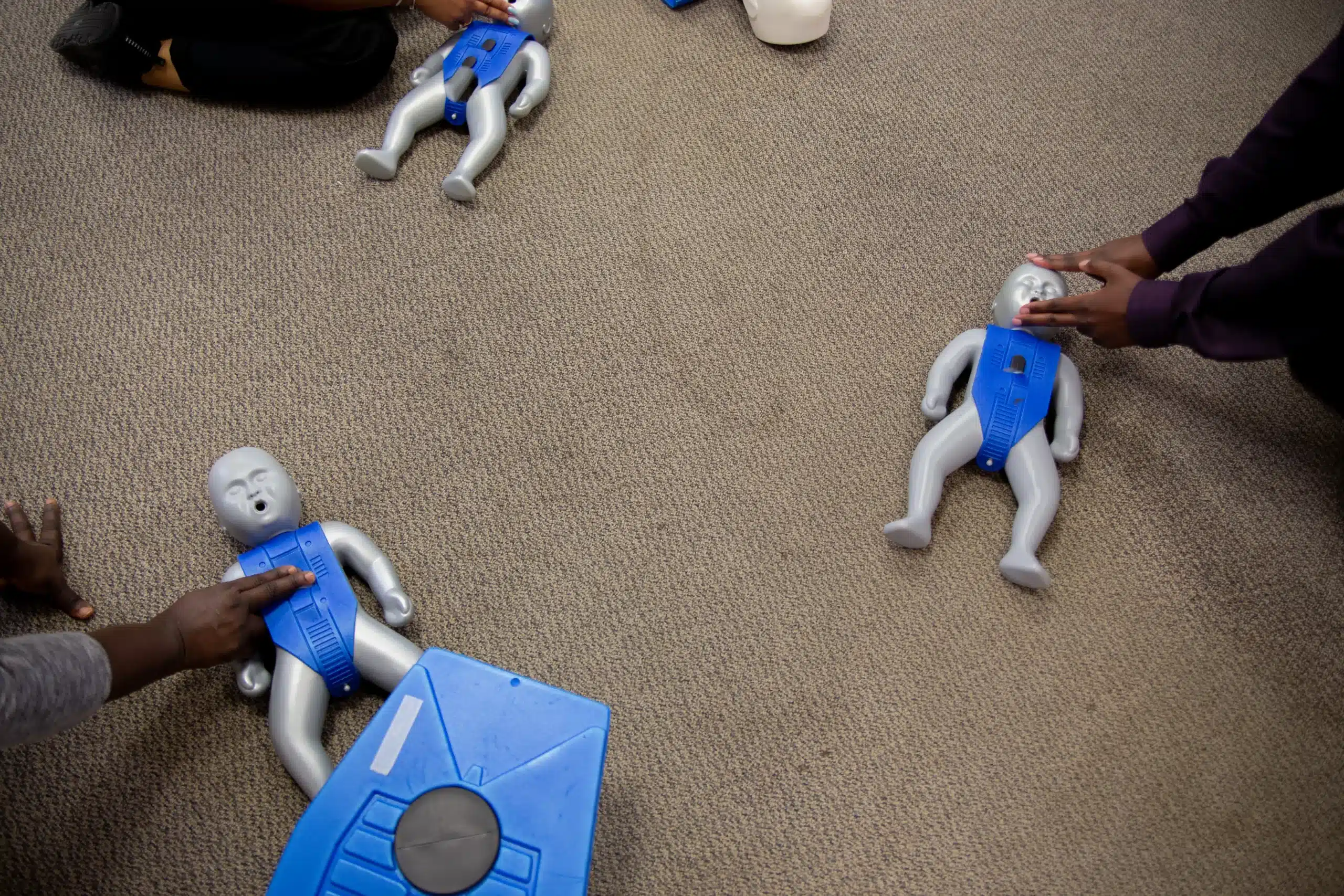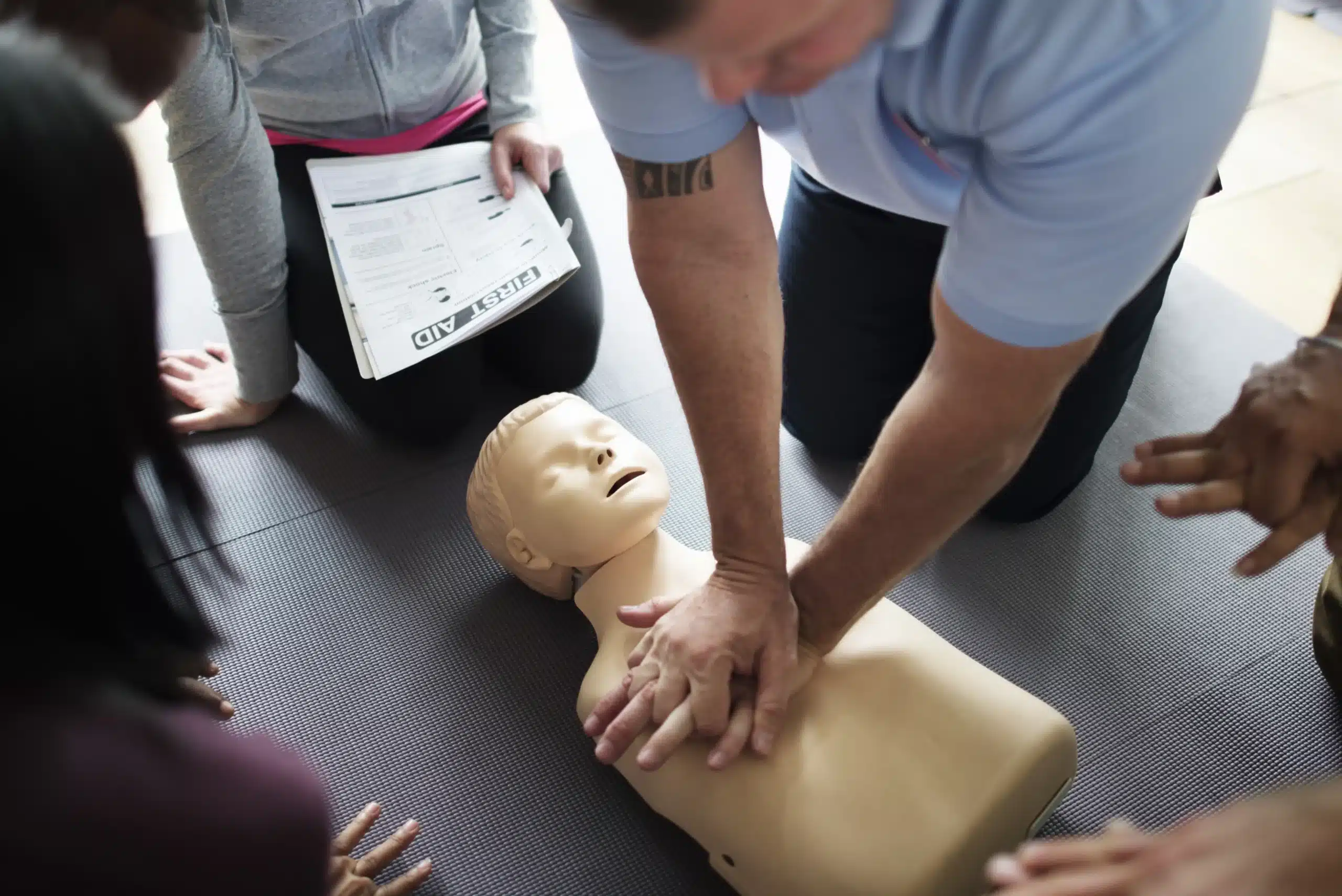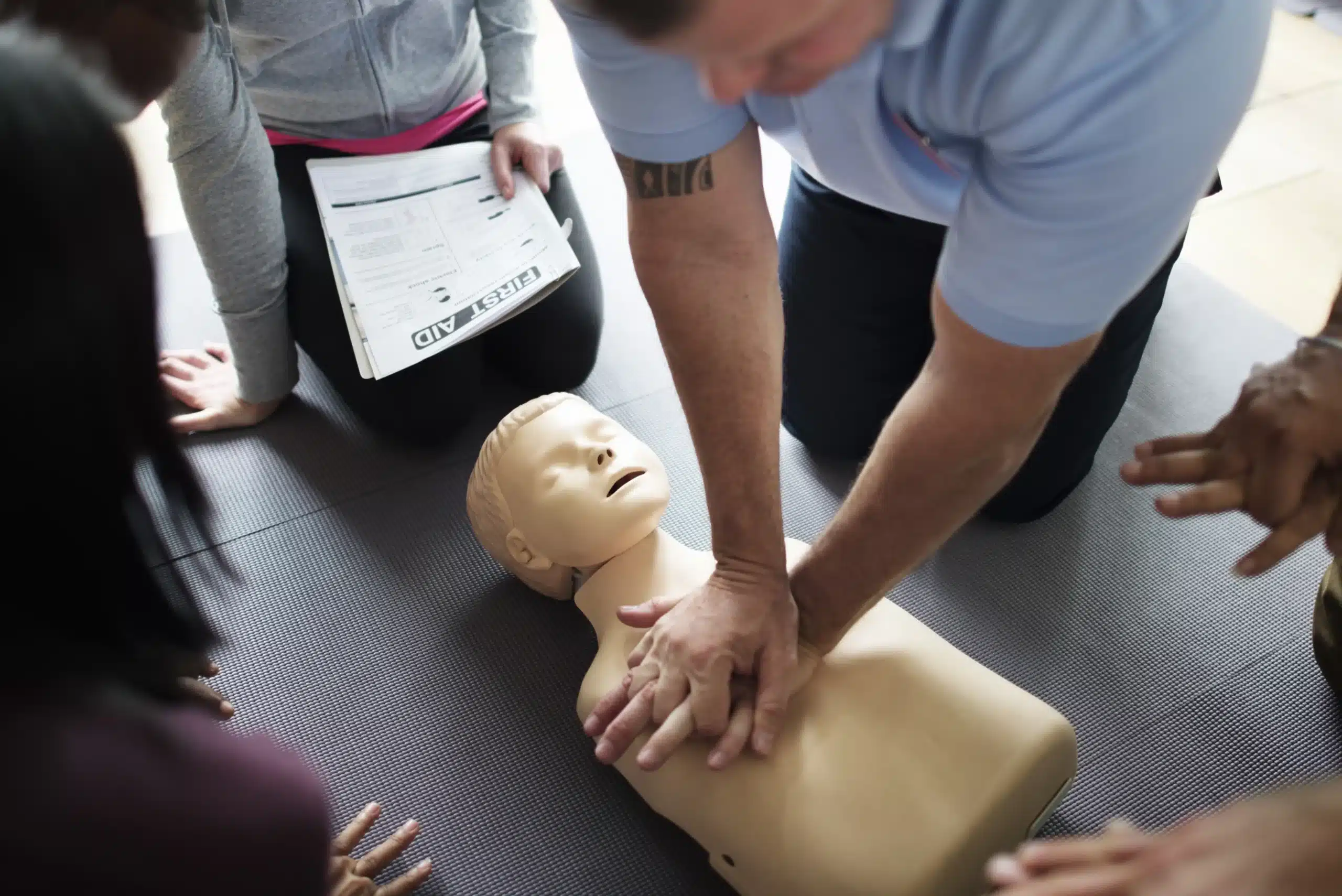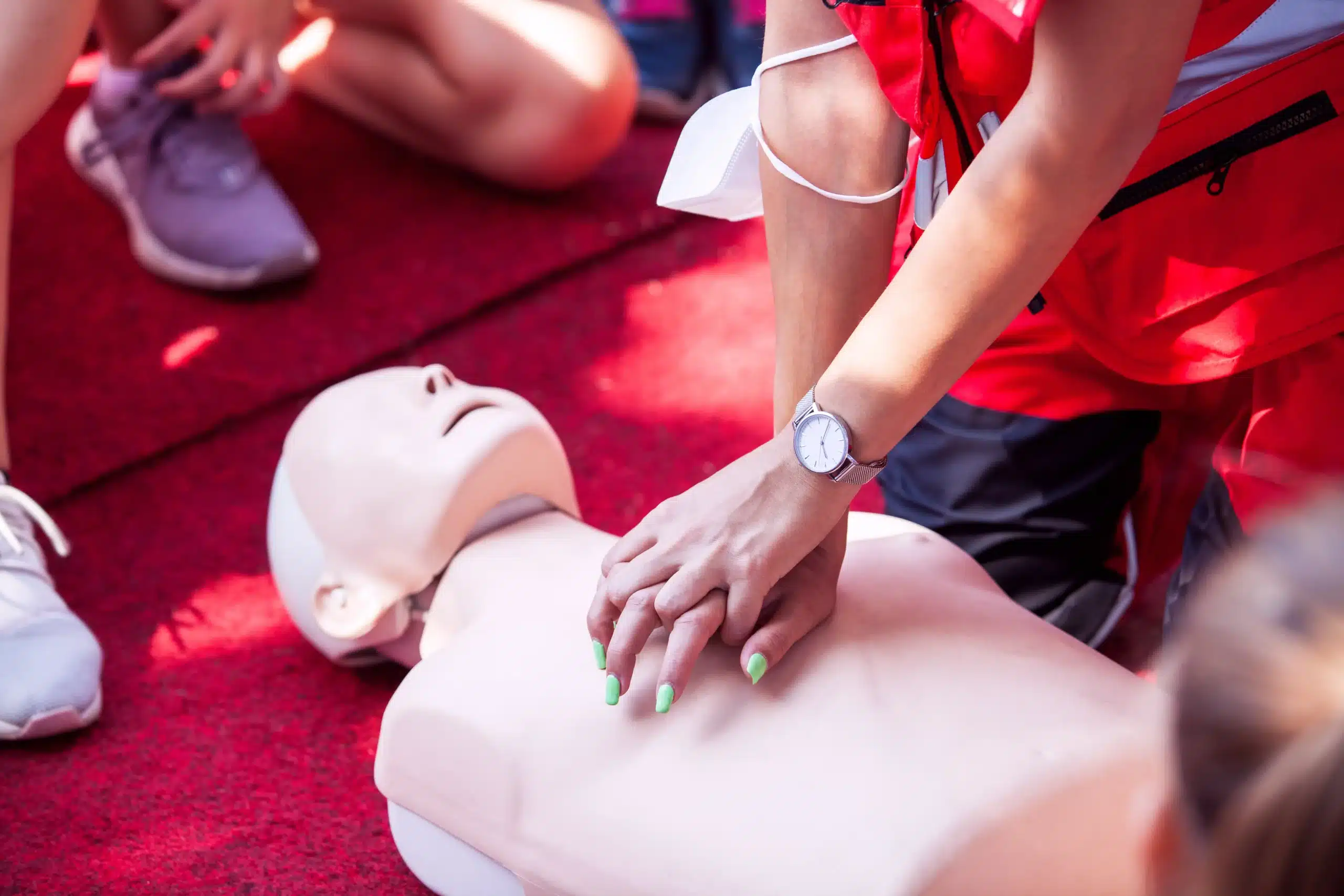As a healthcare provider in Palo Alto, your skills in managing cardiovascular emergencies are crucial. Staying up-to-date with the latest advancements in Advanced Cardiovascular Life Support (ACLS) is not just important—it’s essential. But finding the time for traditional, multi-day courses can be a real challenge. That’s where ACLS HeartCode in Palo Alto comes in. This innovative blended learning program combines the flexibility of online learning with the practical experience of hands-on skills sessions, making it easier than ever to get certified or recertified. This article will break down everything you need to know about ACLS HeartCode, from its key components and benefits to how it compares with traditional ACLS training. We’ll also explore top providers in Palo Alto, discuss costs and value, and guide you through the enrollment process. Ready to enhance your skills and provide the best possible care to your patients? Let’s get started.
Key Takeaways
- ACLS HeartCode blends online learning with hands-on skills practice: This flexible format lets you learn at your own pace and schedule the in-person skills session when it’s convenient.
- Interactive modules and simulations enhance engagement: Realistic scenarios and personalized feedback create a dynamic learning experience, improving your understanding and retention of essential ACLS concepts.
- Regular recertification keeps your skills current: Maintaining your ACLS certification through HeartCode ensures you’re always prepared to handle cardiovascular emergencies with confidence and provide the best possible patient care.
What is ACLS HeartCode?
ACLS HeartCode is the American Heart Association’s blended learning course for Advanced Cardiovascular Life Support. It combines online learning with hands-on skills practice and megacode testing. This approach offers a flexible way to get your ACLS certification, letting you learn essential concepts and practice skills at your own speed.
Define ACLS HeartCode and its key components
HeartCode ACLS uses adaptive learning technology. This means the program adjusts to your individual learning pace, offering personalized feedback and guidance as you move through the material. The online portion covers essential topics including effective team dynamics, communication skills, and recognizing and managing life-threatening cardiovascular emergencies like heart attacks and strokes. You’ll also learn advanced airway management techniques and how to administer medications in critical situations. The course includes interactive modules, case studies, and realistic simulations. These elements help you apply your knowledge in a safe, virtual environment before demonstrating your skills in person. After completing the online portion, you’ll schedule a hands-on skills session and megacode testing with an AHA Instructor.
Compare HeartCode with traditional ACLS
Traditional ACLS courses typically take place over two full days of in-person instruction. While effective, this format can be difficult for busy professionals to attend. HeartCode ACLS offers a more flexible alternative. The online portion lets you learn at your own pace, anytime, anywhere. This makes it much easier to fit the training around your work and personal commitments. Both HeartCode and traditional ACLS courses follow the same AHA guidelines and lead to the same certification. The key difference is the delivery method and the flexibility it provides.
Benefits of ACLS HeartCode in Palo Alto
ACLS HeartCode blended learning gives students more control over their learning experience. It’s a flexible and engaging way to get certified. Here’s why:
Learn at your own pace
Juggling work, family, and continuing education can be tough. HeartCode lets you learn at your own speed, fitting the online portion around your schedule. No more squeezing into a rigid class schedule. You can study when you’re most focused, whether that’s early mornings, late nights, or during your lunch break. This flexibility makes it much easier to manage your time and reduces the stress of fitting training into an already packed schedule.
Blend online learning with hands-on skills
HeartCode combines the convenience of online learning with essential hands-on practice. You’ll start by working through interactive modules, case studies, and simulations online. Then, you’ll schedule an in-person skills session with an instructor. This blended approach ensures you have a solid theoretical foundation before practicing your skills with a certified ACLS instructor.
Engage with interactive content
Say goodbye to dry lectures and passive learning. ACLS HeartCode uses interactive elements, simulations, and exercises to keep you engaged and improve knowledge retention. You’ll work through realistic scenarios, making decisions and seeing the consequences of your actions in a safe learning environment. This active learning style helps you understand the material better and prepares you for real-world emergencies.
Receive personalized instruction
While the online portion is self-paced, the in-person skills session provides valuable personalized instruction. You’ll work with a certified instructor who can offer feedback, answer your questions, and address any areas where you need extra support. This one-on-one attention ensures you’re fully prepared and confident in your abilities before taking the skills assessment. Redwood City CPR Classes offers expert instruction and feedback during this crucial part of the training.
Top ACLS HeartCode Providers in Palo Alto
Finding the right ACLS HeartCode course can be tricky, so I’ve compiled a list of top providers in Palo Alto to make it easier. These programs combine online learning with in-person skills sessions for a flexible and comprehensive training experience.
Redwood City CPR Classes
Redwood City CPR Classes offers a comprehensive range of American Heart Association (AHA) certified courses, including ACLS. They also have an innovative RQI program for medical professionals looking for efficient recertification. Their focus on practical skills and the latest AHA guidelines makes them a solid option. Learn more about their CPR training in Palo Alto.
Stanford Health Care
Stanford Health Care (SHC) offers an ACLS HeartCode Online & Skills Check program, combining self-paced online training with hands-on skills sessions led by an AHA instructor. This course is a good fit for people who already have ACLS certification or whose certification has recently lapsed. SHC’s reputation for excellent medical training makes their program worth considering.
Safety Training Seminars
Safety Training Seminars offers AHA BLS, ACLS, PALS, and CPR classes in Redwood City, CA. Their courses offer clear instruction and are designed to be accessible for anyone wanting to learn CPR and First Aid. Their location near Palo Alto and focus on practical training make them a convenient and useful option.
Palo Alto CPR Classes
Palo Alto CPR Classes provides flexible ACLS HeartCode training that blends online learning modules with a short, in-person skills session. The course is officially recognized by the AHA and you’ll receive an AHA eCard upon completion. Their local focus makes them a smart choice for people specifically looking for a program in Palo Alto.
Cost and Value of ACLS HeartCode Courses
Knowing the price range for ACLS HeartCode training and available discounts helps you budget effectively. It’s also smart to consider the value of the continuing education credits you’ll earn.
Understand Palo Alto pricing
ACLS HeartCode course fees in Palo Alto vary by provider. Contacting training centers directly, like Safety Training Seminars, is the best way to get up-to-date pricing. Redwood City CPR Classes serves the Palo Alto area and offers competitive rates—check their website or give them a call. Comparing prices from different providers helps you find a course that fits your budget.
Find discounts and promotions
Many training centers offer discounts, especially for groups. If you’re training with colleagues or friends, ask training providers about group discounts. Some providers also run periodic promotions, so keep an eye out for opportunities to save. Redwood City CPR Classes offers a low-price guarantee, which can give you extra confidence you’re getting a good deal.
Get continuing education credits
A big plus of completing the ACLS HeartCode online course is earning continuing education credits through the American Heart Association. These credits can be essential for maintaining professional licenses and certifications, adding significant value to your training. Confirm with the training provider that the course offers the CE credits you need.
Enroll in an ACLS HeartCode Course
Getting your ACLS certification through the HeartCode program is straightforward. It blends online learning with a hands-on skills session, offering flexibility and a practical approach. Here’s how it works:
Register for a course
First, register for an ACLS HeartCode course. The registration date is typically the date of your in-person skills assessment, so choose a date that works with your schedule. You should receive your HeartCode link via email within two business days of signing up, giving you ample time to start the online portion.
Complete the online modules
ACLS HeartCode® online is designed for self-paced learning. Work through the modules at your own speed, focusing on the interactive exercises and real-time decision-making scenarios. This approach lets you absorb the material thoroughly and prepare for your skills assessment.
Schedule your skills assessment
Once you’ve finished the online modules, schedule your in-person skills assessment. This typically takes about an hour and involves working with high-fidelity manikins. An AHA Instructor will guide you through the assessment, providing real-time feedback. This hands-on component is essential for applying your knowledge and demonstrating proficiency in ACLS techniques. You can find more information on scheduling and what the skills session entails on the Stanford Health Care website.
Skip the written exam
A major advantage of the ACLS HeartCode program is that there’s no separate written exam. Your successful completion of the online modules qualifies you for the skills assessment. This streamlined approach saves you time and lets you concentrate on mastering the practical skills needed for real-world scenarios.
What to Expect During ACLS HeartCode Training
ACLS HeartCode training blends online learning with hands-on skills practice. This approach offers flexibility and a personalized learning experience. Here’s what you can expect:
Overview of online coursework
The first part of ACLS HeartCode happens online. You’ll work through interactive modules, case studies, and realistic simulations. This self-directed learning allows you to move at your own pace, revisiting challenging concepts as needed. The online portion covers essential ACLS algorithms and protocols, preparing you for the hands-on skills session. You’ll find more information on our BLS course page.
Practice skills with high-fidelity manikins
After completing the online coursework, you’ll schedule an in-person skills assessment. This session typically lasts about an hour and involves working with advanced, realistic manikins. These high-fidelity manikins provide real-time audio and visual feedback, allowing you to practice your skills in a safe and controlled environment. An AHA Instructor will guide you through various scenarios, evaluating your proficiency in essential ACLS interventions. This hands-on practice is crucial for applying your online knowledge in real-world situations. Our group discounts make it even more accessible. Successful completion of this skills check is required to receive your official AHA ACLS Provider eCard. Check out our ACLS page for more details.
Receive real-time feedback
Throughout the HeartCode ACLS course, you’ll receive real-time feedback on your performance. The online modules adapt to your learning pace, providing personalized guidance and support. During the in-person skills session, the instructor offers immediate feedback on your technique and decision-making. This personalized instruction helps you identify areas for improvement and refine your skills. This combined approach ensures you’re fully prepared to handle real-life emergencies.
Prerequisites and Requirements
Before you jump into ACLS HeartCode training in Palo Alto, it’s helpful to understand the prerequisites and what you’ll need to get started. Knowing these details ahead of time lets you focus on learning those lifesaving skills.
Get the necessary certifications
HeartCode ACLS is designed for healthcare professionals who direct or participate in managing cardiopulmonary arrest and other cardiovascular emergencies. This often includes roles within critical care settings. While there aren’t formal certification requirements to begin HeartCode ACLS, it builds upon foundational knowledge. A current BLS Certification for Healthcare Providers is a good base, covering essential life support skills. You’ll be applying the BLS Primary and Secondary Assessment sequence during the course, so familiarity with these concepts is key. You can find more details about BLS certification on the American Heart Association BLS page. Keep in mind that ACLS certification, whether through HeartCode or a traditional course, requires periodic renewal to ensure you’re up-to-date on the latest guidelines from the American Heart Association.
Gather required equipment and materials
The HeartCode ACLS course consists of two parts: online modules and a hands-on skills session. The online portion allows you to work through interactive cases and simulations at your own pace. You’ll need a computer with reliable internet access to complete these online modules. For the in-person skills checkoff, your training center will provide the necessary equipment, including high-fidelity manikins. This combination of online learning and hands-on practice gives you a comprehensive understanding of advanced cardiovascular life support. If you’re looking for group discounts or have questions about what’s included, check out our page on discount group classes. We also offer a low price guarantee, so you can feel confident you’re getting the best value for your training.
Choose Between ACLS HeartCode and Traditional ACLS
Deciding between ACLS HeartCode and traditional ACLS training depends on your learning style and schedule. Both options prepare you to manage cardiopulmonary emergencies, but their approach and structure differ. Let’s explore the pros and cons of each to help you find the best fit.
Weigh the pros and cons
HeartCode ACLS blends online learning with hands-on skills practice. This blended learning approach offers flexibility, allowing you to complete the online portion at your own pace. Traditional ACLS courses typically run for two days and require in-person attendance for the entire duration. If your schedule makes it tough to commit to two consecutive days, HeartCode’s flexibility might be a major advantage.
While HeartCode offers convenience, traditional ACLS provides immediate, in-person interaction with instructors and peers. This direct interaction can be beneficial for those who thrive in a traditional classroom setting and prefer asking questions in real time. Consider which learning environment best suits your needs when making your decision.
Consider your learning style
Beyond scheduling, think about how you learn best. HeartCode ACLS uses simulations and interactive exercises to create an engaging learning experience. The adaptive learning technology personalizes the training, adjusting to your progress and focusing on areas where you might need more practice. If you enjoy interactive learning and appreciate a personalized approach, HeartCode might be a good fit.
Traditional ACLS follows a set curriculum delivered in person. This structured approach can be helpful for those who prefer a clear, step-by-step learning process. Both methods cover the same core ACLS content, but the delivery and learning experience differ. Weigh these factors to choose the best path for your ACLS certification.
Maintain Your ACLS Certification
Keeping your Advanced Cardiovascular Life Support (ACLS) skills sharp is crucial for any healthcare provider. It’s not a one-and-done deal. Staying current with the latest guidelines ensures you’re prepared to deliver the best possible care in emergencies. Here’s how to maintain your ACLS certification and stay at the top of your game.
Renew your certification with HeartCode
ACLS certification is valid for two years. Recertification is essential to stay updated with the latest advancements in ACLS. The HeartCode ACLS program offers a blended learning approach that combines online learning with in-person skills practice. This flexible format makes it easier to fit renewal into your busy schedule. You’ll complete the online portion at your own pace, then attend a hands-on skills session to demonstrate your proficiency. This blended learning style ensures you can practice essential skills in a real-world environment.
Stay updated on AHA guidelines
The American Heart Association (AHA) regularly updates its guidelines for CPR and emergency cardiovascular care. Staying informed about these updates is key to providing effective and safe patient care. HeartCode ACLS courses incorporate the latest AHA guidelines, ensuring you’re learning the most current practices. These courses cover everything from advanced airway management techniques to effective team dynamics and communication—all essential for a successful emergency response. By staying up-to-date, you’ll not only maintain your certification but also enhance your confidence and ability to provide optimal care. You can find more information on how the 2020 AHA Guidelines are integrated into ACLS training through various providers.
Succeed in ACLS HeartCode
So, you’ve decided to pursue your ACLS certification through the HeartCode program. Smart move! It’s a flexible and efficient way to level up your skills. This blended learning program combines online coursework with a hands-on skills session, giving you the best of both worlds. But like any worthwhile pursuit, ACLS HeartCode requires focus and smart preparation. Here’s how to succeed:
Manage your time effectively
HeartCode ACLS Part 1, the online portion, allows healthcare providers to learn at their own pace. This flexibility is a huge advantage, but it also requires effective time management. Don’t underestimate the material; the HeartCode ACLS course covers a lot of ground, from managing cardiopulmonary arrest to other cardiovascular emergencies, plus effective team dynamics and communication. Break down the modules into smaller chunks and create a realistic study schedule. Consistent progress, even in short bursts, is more effective than cramming. Think about how you learn best and schedule your study sessions accordingly. Early mornings? Lunch breaks? Find what works for you and stick to it.
Use available resources and support
One of the best things about HeartCode ACLS is the wealth of resources available. The online platform itself is packed with interactive exercises, simulations, and personalized feedback based on the 2020 AHA Guidelines. Take advantage of these tools! Don’t be afraid to repeat modules or simulations until you feel completely confident. If you get stuck, reach out! Your instructor is there to support you and can answer questions, clarify concepts, and provide guidance. Connecting with fellow students can also be incredibly helpful. Study groups, online forums, or even just chatting with a colleague can provide valuable support and different perspectives. Remember, successfully completing the ACLS HeartCode program will equip you with the knowledge and skills to handle cardiovascular emergencies confidently. By managing your time wisely and using the available resources, you’ll be well on your way to earning your certification.
Related Articles
- ACLS HeartCode Menlo Park: Your Certification Guide – Redwood City CPR Classes
- BLS HeartCode Redwood City: A Complete Guide
- Advanced Cardiac Life Support (ACLS) in Menlo Park CA
- Advanced Cardiac Life Support (ACLS) in Palo Alto CA
- BLS HeartCode Palo Alto: Your Certification Guide – Redwood City CPR Classes
Frequently Asked Questions
What are the main differences between ACLS HeartCode and a traditional ACLS course? HeartCode ACLS offers a blended learning experience, combining online modules with an in-person skills session, allowing you to learn the material at your own pace online before demonstrating your skills. Traditional ACLS courses typically involve two full days of in-person instruction. Both methods lead to the same AHA certification and cover the same content.
How long does it take to complete the HeartCode ACLS course? The online portion of HeartCode ACLS is self-paced, so the completion time depends on your individual learning speed. Some people finish in a few days, while others may take longer. The in-person skills session and megacode testing usually take a few hours.
What is included in the in-person skills session for HeartCode ACLS? The in-person skills session focuses on hands-on practice and assessment of your ACLS skills. You’ll work with a certified AHA instructor and typically use high-fidelity manikins to simulate real-life scenarios. The instructor will provide feedback and guidance to ensure you’re proficient in essential ACLS interventions.
Do I need any prior certifications before taking HeartCode ACLS? While not strictly required to start HeartCode ACLS, a current BLS Certification for Healthcare Providers is strongly recommended. A solid understanding of basic life support principles is essential for success in the ACLS course.
How can I find ACLS HeartCode courses near me? Several organizations offer ACLS HeartCode training. Redwood City CPR Classes, Stanford Health Care, Safety Training Seminars, and Palo Alto CPR Classes are all mentioned in the blog post as potential providers in and around Palo Alto. Contacting these providers directly is the best way to get specific information about course schedules, costs, and availability in your area.






